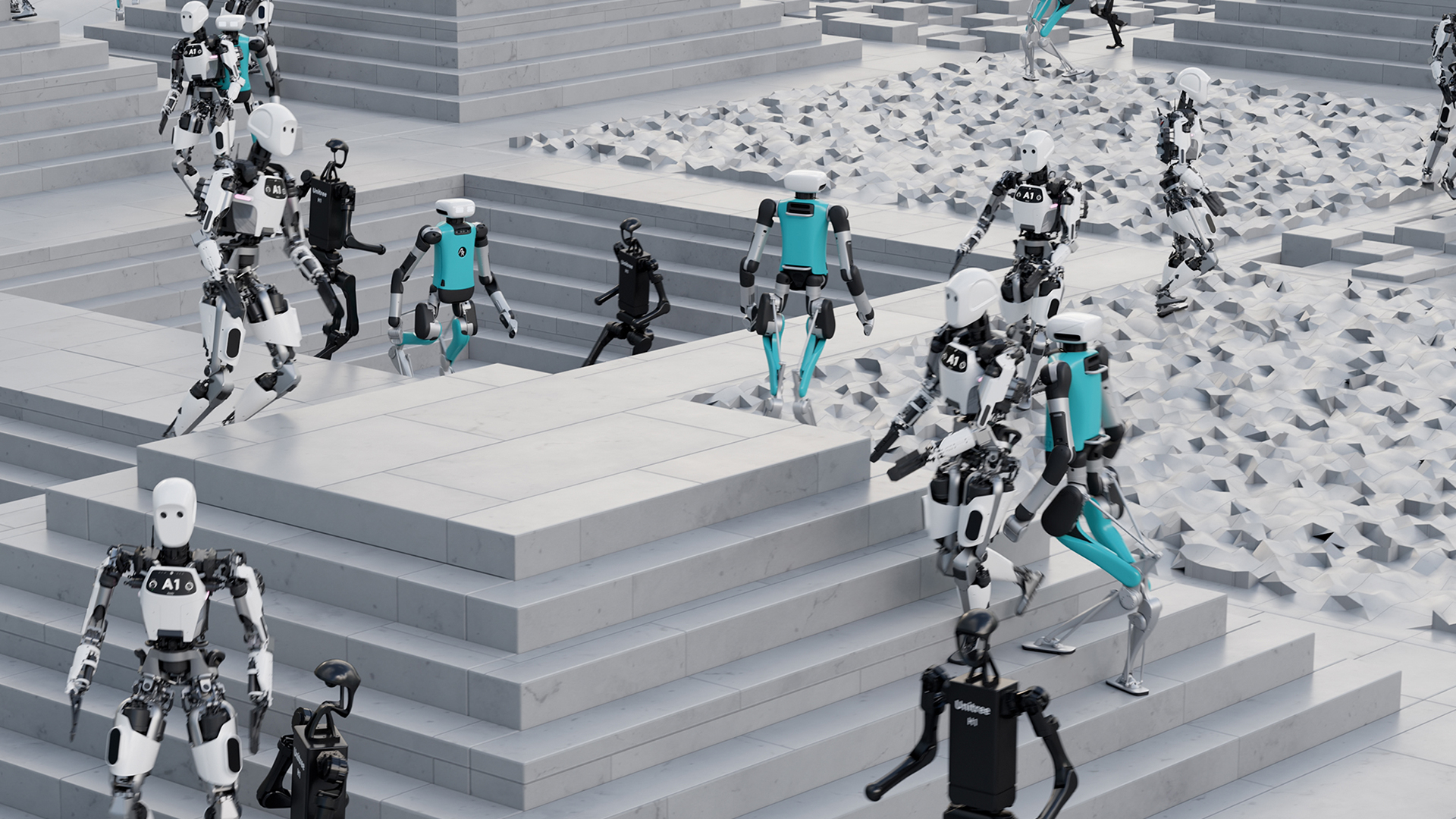NVIDIA Robotics Push

相关个股
Comprehensive analysis
NVIDIA’s announcement bundles four complementary assets — the Newton physics engine, the open base model Isaac GR00T, the Cosmos simulation libraries, and Isaac Lab 2.3 — into an integrated, open robotics stack. Together they target the two principal bottlenecks in robotics development: fidelity of simulation for complex articulated systems (Newton + Cosmos) and higher-level task reasoning and decomposition (Isaac GR00T). By making these components open and integrated with Isaac Sim, CUDA and NVIDIA GPUs, NVIDIA aims to shorten the iteration cycle between simulation and real-world testing, improving data efficiency for learning-based controllers and enabling faster transfer of policies to physical robots.
Causal linkages are clear: higher-fidelity physics (Newton) reduces the reality gap in locomotion and whole-body control, which increases the effectiveness of simulation-collected datasets used to train models. Isaac GR00T provides a cognitive layer to convert high-level instructions into decomposed, executable steps, improving autonomy and reducing developer effort. Cosmos and Isaac Lab provide the tooling and workflows for scalable data collection, remote teleoperation and distributed training. The combined stack thus increases developer productivity, lowers entry barriers, and amplifies demand for NVIDIA compute and software services.
Key insights
- Strategic positioning: Opening core simulation and model components reinforces NVIDIA’s role as an infrastructure provider for robotics research and commercialization, not just a hardware supplier.
- Ecosystem flywheel: Open models + modular simulation encourage academic and industry adoption, driving more published research and integrations that further validate NVIDIA’s stack (already reflected by heavy citation at CoRL and uptake by leading universities).
- Commercial leverage: Broader adoption can convert into multi-layer monetization — GPU/cloud compute, specialized SDKs, enterprise support, and managed services for simulation/annotation/robot-in-the-loop testing.
- Technical leap: Newton’s focus on humanoid dynamics and Isaac GR00T’s task-structuring capabilities address two historically hard problems (complex contact dynamics and high-level reasoning), which could materially accelerate humanoid and mobile robot capabilities if real-world transfer proves reliable.
Risks and opportunities
Opportunities
- Faster product cycles for robotics startups and labs, expanding the addressable market for NVIDIA’s compute and software subscriptions.
- Platform standardization: If widely adopted, NVIDIA can set de-facto standards for simulation and model interfaces, increasing long-term lock-in.
- Partnerships: Universities, labs and robot OEMs integrating these tools could generate joint research, co-marketing and enterprise licensing deals.
Risks
- Competition & fragmentation: Other companies and open-source projects may produce alternative engines/models; openness lowers barriers for competitors to build compatible stacks or forks.
- Sim-to-real limits: Even with improved physics, gaps remain (sensor noise, unmodeled contacts, manufacturing variance). Overreliance on simulation might yield disappointing real-world outcomes if not paired with robust real-world validation.
- Ecosystem & adoption risk: Success depends on an active developer community, documentation, tooling, and backward compatibility. Poor usability or integration friction reduces uptake.
- Commercialization timing: Monetization (software/subscriptions/services) lags open-source traction; converting researchers into paying customers requires clear enterprise value-adds.
Conclusions & recommendations
For investors and partners
- View the announcement as a strategically positive, long-term catalyst that deepens NVIDIA’s moat in robotics infrastructure and could incrementally boost GPU and software/service revenues.
- Monitor adoption metrics (GitHub stars/forks, academic citations, integrations with OEMs, and enterprise trials) over the next 6–12 months to gauge traction.
For robotics teams and enterprises
- Pilot Isaac GR00T + Newton in a constrained domain (e.g., manipulation or bipedal balance) to evaluate sim-to-real transfer improvements before full migration.
- Budget for hybrid workflows: maintain physical validation pipelines alongside simulation to catch residual reality-gap failure modes.
- Engage with NVIDIA and academic partners for early access, co-development or support agreements to accelerate integration and influence roadmap.
For NVIDIA
- Prioritize documentation, reproducible benchmarks, and real-world transfer case studies to lower adoption friction.
- Offer tiered enterprise services (managed simulation/cloud instances, validation toolchains, certification for robot OEMs) to accelerate monetization.
- Foster community governance and partnerships to mitigate fork/competition risks while keeping momentum.
Overall, NVIDIA’s release is a meaningful step toward a unified, open robotics development stack. The initiative is likely to strengthen NVIDIA’s ecosystem and commercial prospects, provided the company sustains developer support, demonstrates reliable sim-to-real gains, and executes on enterprise monetization paths.
数据基于历史,不代表未来趋势;仅供投资者参考,不构成投资建议
